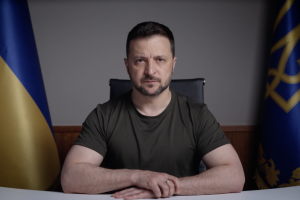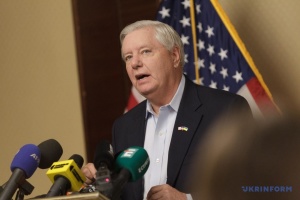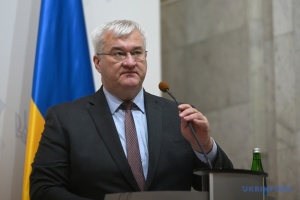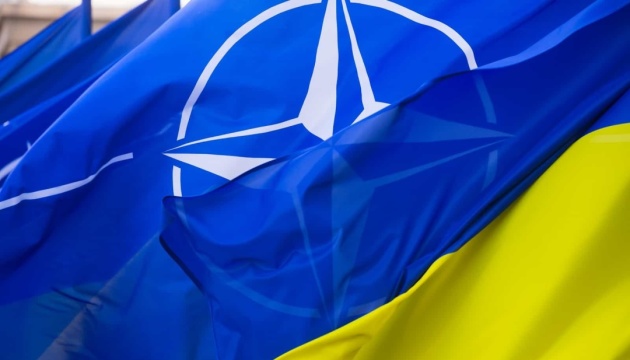
Without MAP, but with updated package of Ukraine–NATO Partnership Goals: what it means
Ukraine will be the first NATO partner to receive an updated package of Partnership Goals, the press service of the Ministry of Defense of Ukraine informs. “The process of planning and reviewing forces is one of the most effective tools for bringing Ukraine closer to NATO standards, strengthening the institutional capabilities of the Defense Ministry, developing the capacities of the Armed Forces of Ukraine, and achieving interoperability,” says Deputy Defense Minister Anatoliy Petrenko. It is noted that the updated package of Partnership Goals for Ukraine contains tasks and activities up to 2025. It also outlines the forces and means that Ukraine is preparing to participate in the Partnership for Peace program, Alliance’s operations, and missions. The objectives of the partnership are backed by other defense and security sector reform tasks, in particular, the defense reform projects and measures.
This news was perceived differently in Ukraine. Some believe that NATO in this way has decided to “sweeten the pill”, saying that Ukraine is not given a MAP, is not invited to the summit on June 14, however, “the process is not standing still.” Others, on the other hand, see this as an important step in developing and strengthening our defense capabilities. In fact, as military experts say, there is nothing extraordinary and bad either.
Ukraine–NATO Partnership Goals package: What does it mean?
Former Deputy Chief of Staff for Euro-Atlantic Integration, 1st Rank Captain (in reserve) Andriy Ryzhenko says that NATO has simply reminded again that if Ukraine wants to join the collective security system, it must continue carrying out reforms. In particular, it concerns the implementation of the North Atlantic Alliance standards. “What is the updated package of Partnership Goals? This is a planning document that contains tasks for the next four to five years. This is a routine procedure that is constantly updated. The previous cycle of Ukraine's participation in the Planning and Review Process (PARP) was completed in 2020. A new one is starting,” Ryzhenko comments.
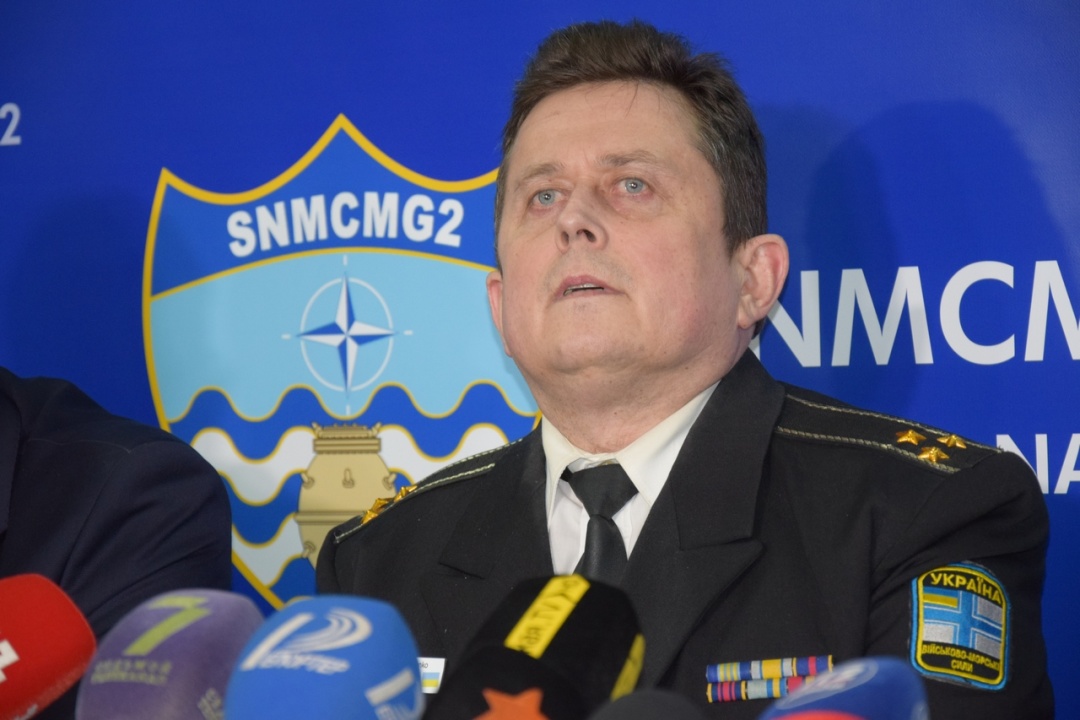
The PARP is a key mechanism of the Alliance to achieve interoperability of the newcomers’ armed forces with the armed forces of the Allies, as well as to reform the security and defense sector in line with Euro-Atlantic standards. “The conclusion made by NATO military experts on a sufficient level of interoperability of the armed forces is taken as a basis for the North Atlantic Council’s decision to grant a MAP to an aspirant country,” he said.
“It should be noted that the updated package of Partnership Goals applies not only to Ukraine but also to other countries with which NATO cooperates. However, Ukraine will probably be the first such country. Currently, this whole algorithm is being elaborated. There is no final decision. As far as I know, the discussion is scheduled for autumn,” adds ex-defense minister Andriy Zahorodniuk.
According to Olena Tregub, Secretary General of the Independent Defense Anti-Corruption Committee (NAKO), the package of Partnership Goals can be seen as movement towards the MAP but beyond the formal status of a candidate country within the MAP. “The partnership goals are to achieve NATO standards by the end of 2025 at all levels of defense sector (strategic, operational and tactical). It should be emphasized that the achievement of goals is set not only before the Ministry of Defense of Ukraine but before all ‘security agencies’ as well,” Tregub says.
At the same time, she continues, NATO keeps emphasizing that Ukraine’s previous partnership programs have not been fully implemented. They mean the forces and means that Ukraine needs to prepare to participate in the Partnership for Peace program, the Alliance’s operations, and missions. “During the meeting of the working group on the draft package, our international partners stressed the importance of continuing defense reforms, in particular, developing an efficient democratic civilian control system, subordinating military components of the defense sector to the civilian ministry, reforming the system of management of the Armed Forces of Ukraine, achieving interoperability with NATO countries,” the NAKO Secretary General underlined.
In turn, Marianna Fakhurdinova, research fellow at New Europe Center, notes that Ukraine implemented 292 NATO standards and documents as of early 2021, accounting for 19 percent, which generally corresponds to the level of countries that have recently joined the Alliance. “We decided to compare the number of standards reached in Ukraine and in NATO member states. Thus, in percentage terms, Ukraine implemented 19% of NATO standardization agreements. And we noticed that this figure is very close to the standards that have been implemented by those Allies that joined NATO over the past 10 years. For example, it stands for 29% in Albania, 22% – in Montenegro. North Macedonia, which became a NATO member last year, has not even reached the level of 1%,” Fakhurdinova says.
The analyst also cites examples of countries with a high level of implementation of standards, namely: Germany reached 91%, Great Britain, France, and Norway – about 80%. “These are the member states that actually stood at the origins of the Alliance or joined it in the early years ... But, again, we see that no country has achieved 100% implementation of the standards,” she notes.
According to the expert, Ukraine is showing “very good progress”, despite being a partner of the Alliance, not its member state. “The latest package of partnership goals, set for 2018-2020, provided for processing 219 standards. As of the beginning of this year, Ukraine actually processed about 90% of these documents,” Fakhurdinova explains the procedure, emphasizing that the implementation of NATO standards by Ukraine proves that our country fulfills its obligations in a timely manner.
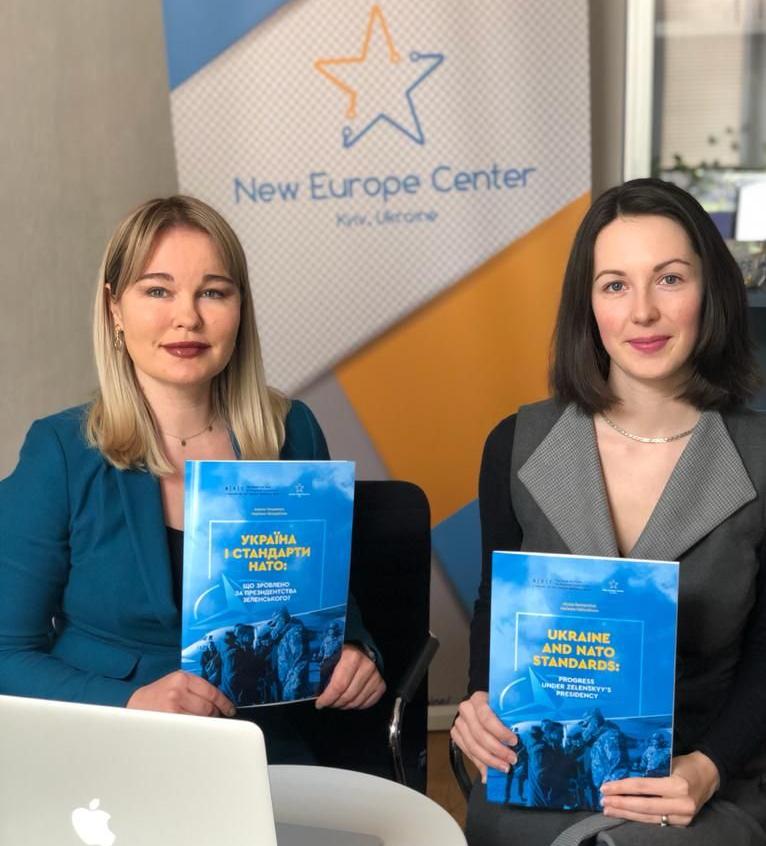
In turn, Alyona Getmanchuk, Director of the New Europe Center, points out the need to further accelerate the implementation of NATO standards. “New Europe Center decided to calculate how long it would take for Ukraine to reach at least 90% of implemented NATO standards (as Germany did) at the pace we had the past year and a half or two years. And it turned out that it will take 13-14 years. That is, if we want to achieve military interoperability with NATO member states as soon as possible, we need to accelerate this process even more, despite the fact that we already have a good pace,” Getmanchuk said.
Olena Tregub shares the opinion: “The speed and quality of the implementation depend entirely on the capabilities and desires of Ukraine.”
About MAP and why Ukraine was not invited to NATO summit
The next NATO summit will take place in Brussels in two weeks. Only member states will participate. “Because it is a relatively short summit – one day – then as for next time, maybe we will then decide to have more time and then it is likely that having high-level partnership meetings will increase,” said NATO Secretary General Jens Stoltenberg.
According to him, NATO continues working with aspirant countries such as Georgia and Ukraine. “Our message is that the focus should be on reforms to modernize the defense and security institutions because we believe that that's the best way to move towards further Euro-Atlantic integration,” Stoltenberg noted.
At the same time, Secretary General did not say when a high-level meeting with partners could be held. It will be recalled that the leaders of other states were not always invited to NATO summits. For example, only (!) NATO members were present at the 2019 London summit to mark the 70th anniversary of the Alliance.
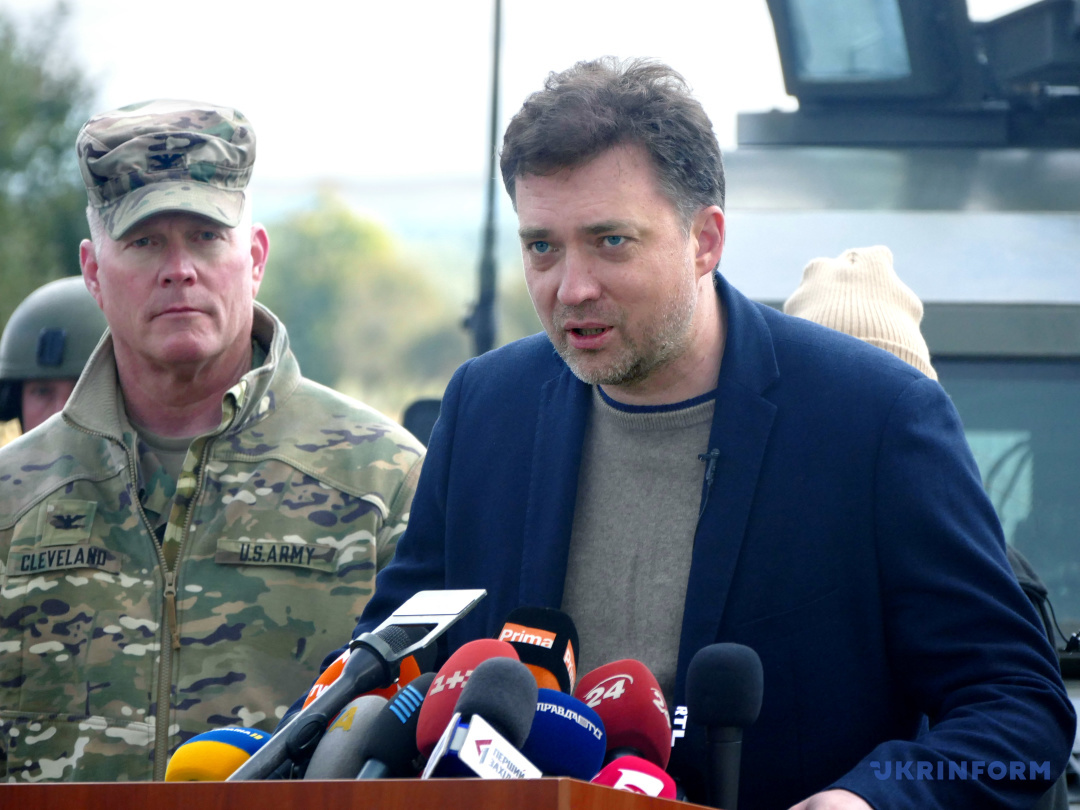
“The fact that we are not participating in the summit is presented as a great tragedy. However, I think there is nothing special here. This step is definitely not targeted against Ukraine. It will be a one-day summit. NATO’s transformation and the launch of a new strategy are planned to be discussed. Ultimately, we need to understand that some events will take place without us until we become the Alliance members. And this is normal. At the same time, vain expectations were raised for some reason, saying Ukraine will be given a MAP at this summit. But no one promised that. In the end, neither discussions nor appropriate preparations were held. And all the services that cooperate with NATO knew about it. Well, you can’t get a MAP as a surprise. We still need to pass a number of laws and do other homework. Indeed, much has been done, but there is still a lot of hard work ahead. I think that the situation around the MAP is now dramatized much more than it should be,” emphasizes former defense minister Zahorodniuk
In addition, the ex-minister recalled how Ukraine received NATO’s Enhanced Opportunities Partner status in June 2020. By the way, Sweden, Finland, Australia, Georgia, and Jordan have the same status now. “This does not mean that we will never receive the MAP. We will receive it, but not now. At the same time, we should make full use of previous opportunities, in particular within the framework of the EOP program. What does this program provide for? Political consultations with NATO (particularly, at the level of defense ministers), greater compatibility of armies and more joint exercises (e.g., access to exercises involving only NATO members), exchange of information and intelligence data, service of Ukrainian troops in the staff of NATO’s multinational governing bodies, deeper cooperation with NATO “in times of crisis and preparation of operations” of the Alliance, and so on. In fact, even without having a MAP, without being a NATO member, Ukraine can receive the same resources as full-fledged Alliance members have,” says Zahorodniuk.
“Of course, NATO is willing to promote Ukraine’s interest in membership but is not ready to offer it. The MAP is a geopolitical issue,” adds Olena Tregub.
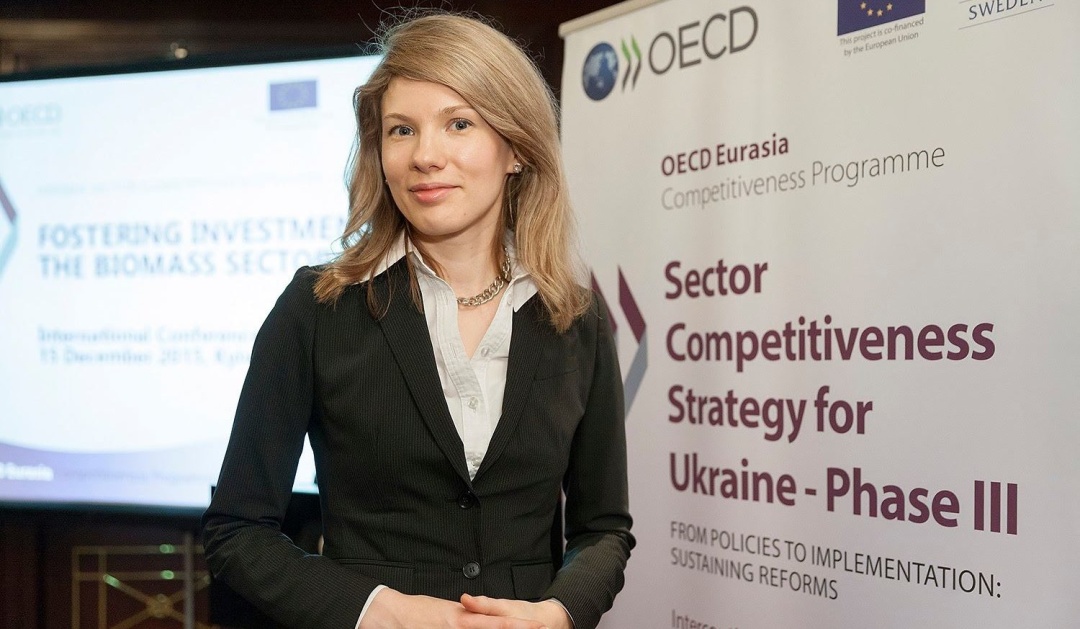
According to her, representatives of Bulgaria, Great Britain, Denmark, Canada, Latvia, Lithuania, Poland, the United States, and France have already taken note of the progress of defense reform in Ukraine, as well as Ukraine's efforts to approach NATO standards and principles. “But any decision to invite a candidate country to start negotiations with NATO to join the Euro-Atlantic family will be made by NATO member countries on a case-by-case basis in accordance with Paragraph 8 of the Madrid Declaration (1997) and the Washington Summit Declaration. And here it is important to understand that such steps are taken exclusively by a consolidated decision of all members of the Alliance. As of today, it is doubtful for Ukraine to receive 100% support for accession from all NATO members. Such countries as Hungary, the Czech Republic, France, Germany, and the Netherlands are most likely to oppose it. Some are afraid of Russia or still wants to appease it (France, the Netherlands), some are waiting for the election campaign (France, Germany), some do not believe in the sincerity of Ukraine’s Euro-Atlantic choice (the Netherlands), some are disappointed primarily by the pace of reforms. In public, all NATO member states are talking only about the latter factor,” Tregub notes.
In particular, she continues, the “enchanted trio” of judicial reform, Security Service reform, and real success in the fight against corruption are exactly what NATO partners expect from Ukraine. “That is, any special partnership with NATO, except for the MAP, is in fact the same message about the vision of Ukraine in the Alliance. Within the framework of such a partnership, our country can follow the same path as within the MAP, but it formally gives NATO a ‘room for maneuver’ from a geopolitical point of view,” Tregub sums up.
Myroslav Liskovych, Kyiv

